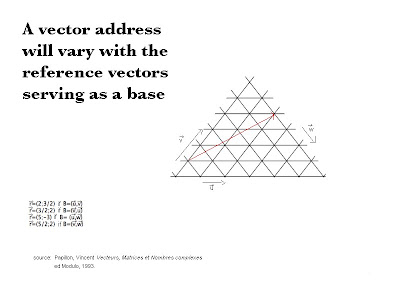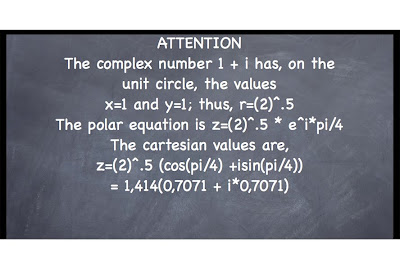from: Vidar-Madjar, Alfred, OÙ ALLONS-NOUS VIVRE DEMAIN, Hugo & Cie, Paris, 2009.
You really don’t know how far stars are, but you suspect they are really very far.
If from Paris, you imagine our dear earth the size of a pin point, the moon would be a second pin point, two centimeters beside it, our awesome sun , a beautiful orange
five meters away, thus almost in the same room as you. The star nearest you, another orange surrounded by a few pin points some ten meters around it, but outside of France, 1,300 kilometers from Paris, let’s say in Rome for example. So take up the sun autoroute with your two pin points and your orange and make the trip to Rome where you will finally meet up with the first other orange similar to our sun, the star nearest our Solar System. Between the two, nothing, not even a few pint points loitering here and there. You are starting to appreciate, very vaguely, but a little bit better, how far stars are from us.
Tuesday, June 29, 2010
Monday, June 28, 2010
Story of Gravity
from: Stéphanie Ruphy, LA RECHERCHE, espace blogs.
...
What is the nature of universal gravity?
It is by far the least powerful of the four basic interactions today identified.
Happily for us, the effects of the electric force, which can be attractive or repulsive,
cancel out at our scale by virtue of the neutrality of matter. Imagine for a moment that two people situated one meter apart each possess one percent electrons in excess of protons. One could calculate that the electrical force of repulsion between these two negatively charged individuals would then be gigantic, a billion times a billion superior to their weights! As for the other types of fundamental interactions, their very short field of action confines their effect to the world of the nucleus of atoms.
...
It is (gravity) which insures the cohesion of the xxx atoms which make up a star such as our sun. An immediate visual translation of this role is the spherical form of stars, and more generally of the satellite planets of a size superior to a critical value in the order of some one hundred kilometers. Objects of a more modest dimension, such as asteroids, present on the contrary more varied forms, often quite irregular. This difference is understandable through the nature of the forces which are principally responsible for the cohesion of matter. For smaller bodies, electrical forces dominate. These forces being of short range of effect, they are indifferent to the global shape of the object. While for larger bodies, gravity dominates and imposes a maximum of compactness which is translated to a spherical form.
Gravity dominates the entire life of a star. The latter is formed through the gravitational
implosion of a gas cloud: particules, at first dispersed, attract each other and get closer. This contraction liberates energy which gets converted to thermal energy and light emission. Gravitation is thus for a star the first direct source of light emission. But if it were the only one, a star such as our sun could only shine some thirty million years! Thanks to the thermal energy liberated, the temperature and pressure of the star increase as it contracts, up to the onset of nuclear reactions. Gravitation thus insures a sufficient confinement of gas at the heart of a star for the production of fusion of hydrogen into helium, the primary source of stellar light emission. The star thus finds itself in a state of hydrostatic equilibrium where the forces of internal pressure and gravitation cancel out.
...
What is the nature of universal gravity?
It is by far the least powerful of the four basic interactions today identified.
Happily for us, the effects of the electric force, which can be attractive or repulsive,
cancel out at our scale by virtue of the neutrality of matter. Imagine for a moment that two people situated one meter apart each possess one percent electrons in excess of protons. One could calculate that the electrical force of repulsion between these two negatively charged individuals would then be gigantic, a billion times a billion superior to their weights! As for the other types of fundamental interactions, their very short field of action confines their effect to the world of the nucleus of atoms.
...
It is (gravity) which insures the cohesion of the xxx atoms which make up a star such as our sun. An immediate visual translation of this role is the spherical form of stars, and more generally of the satellite planets of a size superior to a critical value in the order of some one hundred kilometers. Objects of a more modest dimension, such as asteroids, present on the contrary more varied forms, often quite irregular. This difference is understandable through the nature of the forces which are principally responsible for the cohesion of matter. For smaller bodies, electrical forces dominate. These forces being of short range of effect, they are indifferent to the global shape of the object. While for larger bodies, gravity dominates and imposes a maximum of compactness which is translated to a spherical form.
Gravity dominates the entire life of a star. The latter is formed through the gravitational
implosion of a gas cloud: particules, at first dispersed, attract each other and get closer. This contraction liberates energy which gets converted to thermal energy and light emission. Gravitation is thus for a star the first direct source of light emission. But if it were the only one, a star such as our sun could only shine some thirty million years! Thanks to the thermal energy liberated, the temperature and pressure of the star increase as it contracts, up to the onset of nuclear reactions. Gravitation thus insures a sufficient confinement of gas at the heart of a star for the production of fusion of hydrogen into helium, the primary source of stellar light emission. The star thus finds itself in a state of hydrostatic equilibrium where the forces of internal pressure and gravitation cancel out.
Tuesday, June 22, 2010
Sunday, June 20, 2010
Virtual Question
from: Maxime Coulombe, Le monde sans fin des jeux vidéo, Presses universitaires de France 2010.
It is on the ruins of the presence of the other that symbolization is made possible. It is its simplified form, closed-in: the other without the venom of alterity. In World of Warcraft, the esthesic complexity of a relation with the other finds itself reduced to a simple dialogue with keyboard interposed. It is this simplification which opens unto a new complexity where, in the manner of a Rorschach non-form, the subject can glimpse the state of his desires.
One finds here, for instance, this projection in the frequent questions of a sexual nature posed to female avatars: «Are you a real girl?». In other words: «Am I correct in assuming a sexual corespondence between you, behind the keyboard, and your avatar?». A preliminary question to a free play of fantasm on the representd avatar.This is perhaps not so surprising. Neither, in fact, is the answer «yes». For this «yes», in some sense, gives permission to daydreaming and courtisan fantasy - fairee world style. One thus sees warriors court fragile newcomers -, sexual stereotypes carry on, even on-line -, while others on the contrary are fascinated by avatars of the opposite sex having attained the higher levels of experience and splendid with power and possessions. Let us reflect again on the story of the two adventurers helping each other, going on a quest together, finding affinities, developng a relationship on the field of battle.
For if I want to fantasize my interest for the other player, I can also imagine his interest for me. ...And I could make of this interest a means for immediate recognition. Imagining the other grandiose, I will find a victory for myself in duel with him, or find his compliment, or his gesture of generosity on my behalf, even more value-giving. Here is why Serge Tisseron could well remark «I put up with separation at the price of representing not only the absent one, but an absent one who thinks of me as much as I think of him. Without this second representation, the first is but sheer torture»(1). If the avatar is well an indication of the presence of the other, its technological thickness allows me to imagine his eye on me.
On can thus see this coming, the misknowing of the identity of the other, the limits to the possibility of communication with him are not a negative aspect or a lacuna of a virtual relationship. They are the foundation to its specificity, its interest for many adepts of virtual worlds. The distant relationship with the other is not a second-best, but possesses a value in itself.
(1) Serge Tisseron, Virtuel mon amour, Albin Michel 2008.
It is on the ruins of the presence of the other that symbolization is made possible. It is its simplified form, closed-in: the other without the venom of alterity. In World of Warcraft, the esthesic complexity of a relation with the other finds itself reduced to a simple dialogue with keyboard interposed. It is this simplification which opens unto a new complexity where, in the manner of a Rorschach non-form, the subject can glimpse the state of his desires.
One finds here, for instance, this projection in the frequent questions of a sexual nature posed to female avatars: «Are you a real girl?». In other words: «Am I correct in assuming a sexual corespondence between you, behind the keyboard, and your avatar?». A preliminary question to a free play of fantasm on the representd avatar.This is perhaps not so surprising. Neither, in fact, is the answer «yes». For this «yes», in some sense, gives permission to daydreaming and courtisan fantasy - fairee world style. One thus sees warriors court fragile newcomers -, sexual stereotypes carry on, even on-line -, while others on the contrary are fascinated by avatars of the opposite sex having attained the higher levels of experience and splendid with power and possessions. Let us reflect again on the story of the two adventurers helping each other, going on a quest together, finding affinities, developng a relationship on the field of battle.
For if I want to fantasize my interest for the other player, I can also imagine his interest for me. ...And I could make of this interest a means for immediate recognition. Imagining the other grandiose, I will find a victory for myself in duel with him, or find his compliment, or his gesture of generosity on my behalf, even more value-giving. Here is why Serge Tisseron could well remark «I put up with separation at the price of representing not only the absent one, but an absent one who thinks of me as much as I think of him. Without this second representation, the first is but sheer torture»(1). If the avatar is well an indication of the presence of the other, its technological thickness allows me to imagine his eye on me.
On can thus see this coming, the misknowing of the identity of the other, the limits to the possibility of communication with him are not a negative aspect or a lacuna of a virtual relationship. They are the foundation to its specificity, its interest for many adepts of virtual worlds. The distant relationship with the other is not a second-best, but possesses a value in itself.
(1) Serge Tisseron, Virtuel mon amour, Albin Michel 2008.
Monday, June 14, 2010
Saturday, June 12, 2010
Wednesday, June 9, 2010
Sunday, June 6, 2010
Friday, June 4, 2010
Subscribe to:
Comments (Atom)








